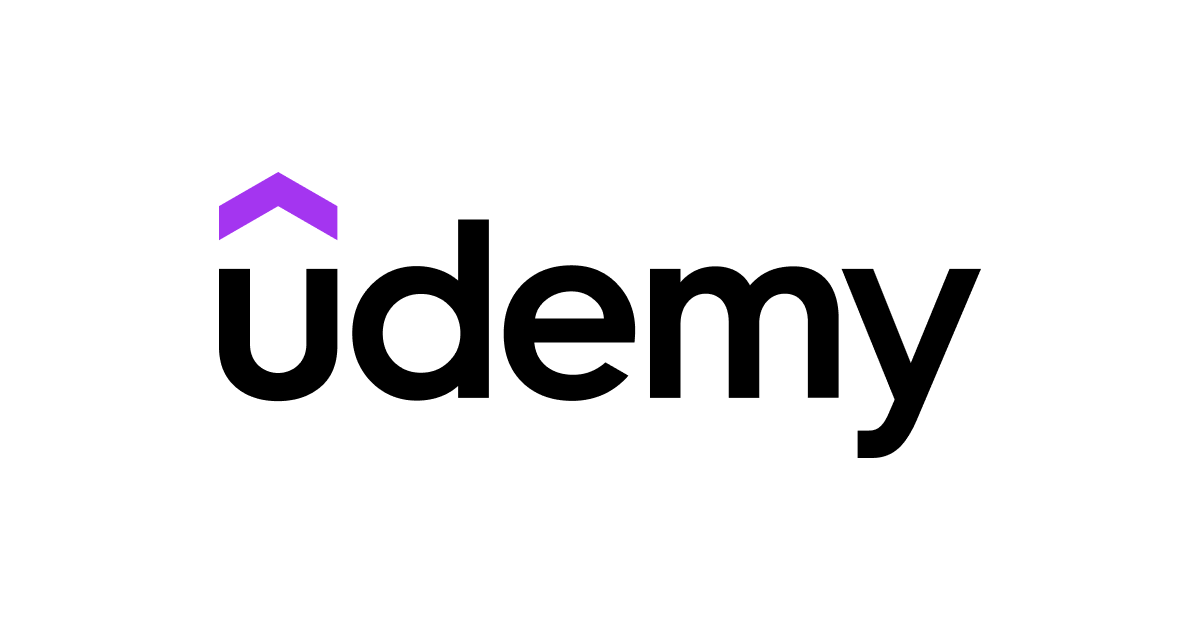Online learning is on the rise. Even before the pandemic, the online education market is expected to reach $350 by 2025.
If you’re starting your career in online learning, you must have come across Teachable. It is one of the most popular online platforms for education. With it, you can create online courses and coaching services.
While Teachable is an amazing online course platform, it doesn’t suit everyone. Thus, if you’re looking for equally reliable products for online education, we’ve rounded up the best teachable alternatives to try.
5 Best Teachable Alternatives to Consider
1. Kajabi
Kajabi is an all-in-one platform that you can use for creating, hosting, marketing, and selling digital products. It’s primarily used by people who want to sell educational content via web or mobile devices.
Like Teachable, Kajabi has a drag-and-drop platform that makes content creation easier. It also hosts blog posts that you can deliver for free to your potential customers.
With Kajabi, you can also build a professional website fast and easily. The platform has numerous themes you can choose from and helpful tools like opt-in forms, feature highlights, sales pages, and more.
What makes Kajabi a great alternative to Teachable is you won’t need any other software to run your business. From creating your website to hosting your educational content and marketing them, Kajabi got you covered.
Everything is included, and all tools work seamlessly together.
It also has extensive marketing features, including email marketing. That said, you skip the hassle of hiring a third-party provider.
Additionally, the email software is highly customizable, and the marketing campaigns can be fully automated.
Kajabi Features
On the surface, Kajabi can seem a bit on the high side in terms of pricing compared to Teachable.
However, take note that this Teachable alternative lets you manage all aspects of your business, from your web presence to your email needs. Let’s talk about the major features of Kajabi:
- Easy Website Creation
Kajabi provides you with a unique theme to create a beautiful website and offers creative templates for creating landing pages and sales pipeline pages. This is a significant difference from Teachable, where you have to do custom coding to break away from standard themes.
- Blogging Capabilities
Regarding blogging, Kajabi offers way better than most online course platforms.
- Video Streaming
Kajabi has Wistia, one of the leading video hosting platforms around. It is fully integrated into the platform, so you can upload and stream videos seamlessly, regardless of your bandwidth.
- Great Templates for Courses
Kajabi offers beautiful templates for both mini and fully online courses.
Aside from that, you can create communities, memberships, and coaching programs. You can easily modify the content and structure and remove anything you don’t like.
- Live Events
You can host Zoom webinars on Kajabi and build a pipeline around it. This includes a registration page, emails, a checkout page, and after-even sales or offers.
- Strong Customer Support
Another thing that makes Kajabi a standout is its excellent customer support.
Aside from their dedicated team of trained customer support specialists, Kajabi created the Hero University, where you can get extensive online training and community support.
A big bonus of Kajabi is its community. The company regularly holds face-to-face events where Kajabi users can learn the best ways to use the platform and succeed in their online business.
Kajabi Drawbacks
As with any system, Kajabi is not without some flaws. Below are some of its pitfalls:
- Lacks Data Export Features
There’s no easy way to export all your content. If you decide to switch to another platform or save your content on your hard drive, you will need to do a lot of manual labor.
- High Price
Kajabi pricing is higher than average. It starts at $149 a month for the basic plan. If you need more services, you have to pay more.
- Complicated Editing
Editing your site can be confusing. If you’re used to WordPress, Kajabi gets a little complicated.
2. Thinkific
Thinkific is another powerful Teachable alternative that allows you to easily and fully customize the look and functionality of your online courses.
Currently, 40,000 course creators use the platform, and over 30 million online classes are held. It’s a top choice for entrepreneurs and small organizations interested to sell online courses.
Like Teachable, Thinkific starts as a free plan, but it gets more impressive as you choose more advanced plans.
You can add video, audio, pdf, text, and other types of content to your courses. Having said that, Thinkific gives you a lot more flexibility with your e-learning courses.
Also, Thinkific supports a Live Lesson type which isn’t available in Teachable. You can schedule a live Zoom session from the course builder where your students can participate.
Aside from helping you build courses, Thinkific helps promote your products. The platform lets you use reward affiliates and affiliate marketing with instant payouts for sharing your content.
You don’t need a third-party affiliate marketing tool for this. You can track your affiliates directly and incentivize them through the different commission rates you set.
Moreover, you can integrate over 1,000 external marketing tools into your website to run campaigns effectively. The platform also has data tracking features to help you calibrate and optimize your marketing campaigns.
Thinkific Features
Thinkific offers various services for online learning creators, such as:
- Comprehensive Course Builder
Thinkific has an easy-to-use course builder that lets you create engaging learning experiences for your students. As mentioned earlier, you can even host Live sessions via Zoom.
More than that, you can create quizzes, assignments, videos, and presentations that take your course to the next level. You can also incorporate assessments, unlimited videos, and communities.
- Ecommerce
With Thnikific, you can create free, paid, and time-limited courses. You can generate leads from free courses and generate revenue from fee-based courses.
Also, Thinkific has its own built-in payment processor that lets you accept payments and manage payouts to your bank account.
You can even process refunds directly within your Thinkific Dashboard.
Lastly, you’ll have access to new selling tools like a single-performance checkout which reduces the number of pages or clicks your customers need to do to complete the payment.
- Assessments and Certificates
The platform has comprehensive assessment capabilities, such as easy-to-build multiple-choice surveys and assignments. You can even create formal exams.
On top of that, Thinkific allows you to issue customized certificates to your students once they complete their courses.
- Communities
Thinkific Communities give you a place outside of your course content where you can build relationships with your students. This helps drive engagement and learning.
- Award-winning Support
The company has an industry-leading support team via chat, phone, and email. Aside from this, they have an extensive knowledge base, training academy, and a community of over 20,000 entrepreneurs to help you grow your online business.
Thinkific Drawbacks
Overall, Thinkific is a great platform. However, it has a few cons, such as:
- Limited Themes
The Thinkific Site Builder currently comes with only three themes and multiple variations under each theme. The company says more themes are part of their plans.
Also, you can’t install your own style sheets (CCS), although you can personalize other elements like colors and font styles.
- Does Not Support Continuing Education
While you can indicate an estimated timeframe for each of your online courses, you cannot specify the amount of continuing education available for it.
- No Multi-tenancy Option
You can’t do that if you own a training company with many corporate clients and they want their own branded version of the platform. While Thinkific has a Group functionality that gets you part of the way there, it’s not the same as multi-tenancy.
3. Udemy
Udemy is one of the largest online educational platforms today. The site currently offers less than 200,000 courses to over 44 million students.
It’s the go-to resource of students and individuals looking for high-quality educational content and instructors and experts who want to host their own courses.
Udemy is technically not a course platform, but it is often regarded as a Teachable competitor. Udemy is a course marketplace that boasts a huge audience looking for affordable courses.
The best selling point of Udemy is it doesn’t just provide a platform for experts and instructors to host courses and receive payments. It also offers them a ready audience.
With its large student base, many instructors have made successful careers selling online courses on Udemy.
Udemy offers free hosting services, making it easy to make your courses available without paying for your own platform. That said, this website is a good place for new instructors who want to create and sell online courses.
However, if you’re serious about selling online courses, you’ll probably want to stay with Udemy as they take a large commission for generating sales.
Udemy Features
There are several reasons Udemy works well for online course creators. Check out its features:
- Access to a Large Student Base
The major selling point of Udemy for instructors is its active community of students. You can sell courses online to over 40 million students worldwide, so you have a great chance of growing your online learning business quickly.
- Quick and Easy Way to Get Started
Udemy is the quickest way to start selling an online course. You don’t need to have a website, and you can set up a course reasonably quickly.
What’s more, given the large audience base, you don’t need to figure out much about marketing.
Udemy also takes care of several optimizations to improve your courses. For example, it does regular updates to improve conversions and tests new features like different prices for the same course in different geographies.
- Reliable Support
Udemy makes it much easier for instructors to host their courses by providing them with tons of useful support resources.
On top of that, you also get access to an active community of instructors where you can ask questions and exchange feedback from other course creators.
What’s more, they offer a free tool called Marketplace Insights that helps you gather data and insights on the income potential of new course topics.
Udemy Drawbacks
Let’s talk about some disadvantages of Udemy.
- You Can’t Build Your Own Brand
As mentioned earlier, Udemy is best for instructors just starting their online teaching careers. If you’re an established course creator, other platforms like Teachable might suit you better.
Udemy doesn’t let you feature your brand or logo. In fact, when you upload your course, it will add its own branding to your content.
Moreover, you can’t offer any supporting content around your courses or customize the feel and look of your content.
- Hefty Commission Rates
Another major drawback of Udemy is its pricing. While setting up a free course on the platform, Udemy gets a commission on every sale. They also put an effective ceiling on your income potential as an instructor.
4. Podia
Podia is a digital storefront for individuals and businesses looking to sell memberships, online courses, and downloadable content. It’s one of the best alternatives to Teachable because it offers an all-in-one platform to create and sell your courses.
The platform has a neat interface and is very easy to use. You don’t need in-depth technical know-how or third-party plug-ins to build your website.
Podia makes a friendly tool for beginners and intermediate users for these reasons.
In Podia, you can also access advanced course creation techniques, including video and audio lessons, course players, and multimedia lecture support.
The platform also offers a wide range of tools for membership sites. You can connect with customers through live chat and create on-off posts for your audience.
Another selling point of Podia is it allows you to migrate information from an external source to your platform for free. Thus, if you have an account with Teachable or other platforms, switching to Podia gets much easier.
Moreover, Podia offers a full membership site model integration that Teachable lacks.
Podia Features
Podia has a variety of features that can help you succeed in your online learning business.
- Email Marketing
Podia gives you all the tools and resources needed to manage your transactions and promote your courses. For example, Podia comes with an email marketing tool that lets you generate leads.
With email marketing, you can develop several campaigns and set a timeline for everything to be sent. You can also generate emails that will instantly notify students when you have new content available for them.
- Learning and Engagement Tools
Podia lets you use many digital resources to engage your students in the courses. You can integrate questionnaires, certificates, program enforcements, and interactive resources.
Moreover, the platform has a useful dripping function that lets you access dripped course materials for students. You can simply give them instant access to various lessons or the full course.
- Site Design and Customization
Like Teachable, Podia lets you create your own online school in easy steps. You don’t have to stress about purchasing a hosting service separately or hiring a designer for your website.
The Podia Page Builder lets you customize your storefront, landing pages, and sales pages. The platform has many pre-built elements to add to your page.
As such, you can add course summaries, product banners, author profiles, and FAQs, among others.
- Optimized Checkout Process
In Podia, your students can purchase your course via Paypal, credit card, or debit card. They don’t need to create a profile to make a purchase, which makes the checkout process a lot more convenient.
The whole process takes place in one window; thus, your customer can complete the transaction without quitting your page.
Podia Drawbacks
There are a few things that Podia can improve on, such as:
- Website Themes
Unfortunately, Podia doesn’t offer any website designs. All storefronts are created on the system using a default theme.
You can only change the colors of your background, fonts, titles, words, and keys. Apart from these things, there’s not so much you can do.
- Customer Service
One drawback of Podia is it lacks phone support. They only have email and live chat services.
They also don’t have a community of some sort where you can get support and feedback from other Podia users.
- Digital Marketing Restrictions
Although email marketing is included in Podia, the features aren’t as advanced as that of other email marketing software systems.
Good thing, Podia allows third-party integrations, so if you need additional features like email auto-responders, you can just link one to your account.
5. Mighty Networks
Mighty Networks is an online community platform that lets you create your own website and build a brand of loyal fans. Aside from this, the platform lets you create online courses and build membership sites.
Mighty Networks is the only alternative to Teachable, where you can get a solid course creation platform and a community together in one place. You can sell and market your own online courses directly on the platform.
It also comes with a combination of digital marketing tools and integrations to help make the most of your sales funnel. They include polls and questions, blogging, direct messaging, and in-person live events.
The best part of a Mighty network is it’s accessible on both web and mobile apps. That said, your students can conveniently access your courses on whatever device they prefer.
Mighty Networks Features
When you sign up for this platform, you get the following benefits:
- Online Community Builder
Creating communities is an important aspect of growing your business.
Mighty Networks creates a space to communicate and connect with your students. The structure is already there, and you only need to adjust some settings and add content before accepting members into your community.
You can make your community visible to the public, so anyone can explore and join in.
Alternatively, you can keep it private, so people will need to sign up and get approved by you before they can join.
Mighty Networks gives you control over your community branding. You can use a custom domain, upload a logo, and incorporate your brand colors.
More importantly, the platform lets you create engaging content for your members in the form of “quick posts” and articles. Quick posts are like status updates.
- Events
Another type of content that can be beneficial to your online learning business is Events.
Mighty Networks allows you to create virtual or in-person events for your community. You can host a Zoom meeting or webinar from your Mighty Network or use a URL from other video conferencing services like Google Meet.
In addition, you can create a Text Chat Event where you can interact with your members or students through live chat.
- Online Course Creator
Like Teachable, Mighty Networks has a drag-and-drop builder that lets you create courses easily. You can add sections and lessons, attach files, embed external media, add texts and images, and more.
You can set up your courses to “none”, “sequential”, and “timed”. With the first option, your lesson will be available to your students immediately.
In the second, students unlock each section after completing the previous. In the third option, you can drip feed your course based on a schedule.
Moreover, Mighty Networks lets you create an activity feed where only those enrolled can discuss and engage. It works in a similar way to your main network.
Lastly, Mighty Networks support essential learning engagement features like quizzes, assignments, and certifications.
Mighty Networks Drawbacks
Mighty Networks may not be suitable for some instructors or content creators due to the following downsides:
- No Inbuilt Video Hosting
Mighty Networks only allows users to attach files of up to 25 MB in size.
That said, if you want to use videos in your courses, you’ll have to host them on a separate platform like Vimeo or Wistia and then embed the link inside your lessons. This makes it more difficult to manage your content.
- No Third-Party Integrations
Unfortunately, Mighty Networks doesn’t support third-party integrations. This limits the things you can do with your courses.
It also doesn’t support import and bulk uploading that other Teachable alternatives provide.
- No Quizzes
As of right now, Mighty Networks doesn’t offer quizzes. If you want to add one, you can use a third-party platform and embed the link to your course, which is again an additional work.
What Makes Teachable a Great Platform?
Teachable is a solid teaching platform designed for online business owners and individuals who want to create online schools and offer courses.
What makes it great is its solid, straightforward interface that makes creating and selling courses a breeze.
For that reason, Teachable is an excellent choice for beginners who don’t have much technical or coding knowledge.
You can get started for free to create as many courses as you like and then upgrade your account to unlock more features.
With Teachable, you can sell courses, lessons, and eBooks. You can even set up workshops or conferences.
Advantages of Teachable
Teachable offers plenty of benefits that make it the top choice for online teachers and entrepreneurs. The reasons are as follows:
- Teachable offers a free starter option.
- It allows users to create bundle courses and sell various digital products.
- It lets users create as many courses as they like.
- The platform comes with simple tools that make creating courses easy.
- It has a clear and crisp interface where users can create content in all forms of multimedia.
- Teachable provides unlimited video bandwidth and third-party forms and surveys for feedback-gathering.
- It accepts payment in over 130 global currencies in mobile payment methods.
Drawbacks of Teachable
Like any other technology, there are some major downsides to Teachable too. They are as follows:
- There are often issues with slow loading times
- Storing payment details can be a challenge
- The platform has regular downtime for maintenance.
- Teachable’s customer support is below average.
- There’s no community option where users can collaborate or get support
- Digital marketing features are limited.
What to Look for in the Best Alternatives to Teachable
Choosing the right learning platform is an essential part of a successful learning program. While each course platform has different features and business models, there are several key factors that you should consider when choosing a system to create, manage, and sell your courses.
Easy-to-use Interface
Choose a platform that makes course creation a straightforward process. This way, you can focus on creating content for your students and not trying to figure out how this and that works.
A reliable online platform saves precious time by allowing you to build lessons, upload content, and receive payments easily.
Clear Pricing Plans
Most platforms charge monthly, while others earn commissions with every sale completed. Some course creators let you start for free and then give you a chance to upgrade features at a certain fee.
Responsive Support
This is an aspect that many creators often underestimate. However, there’s nothing more frustrating than spending money on a platform and not getting the support when you need it.
Therefore, look for a learning platform that offers quality customer support in various forms, such as phone, email, and live chat.
The best Teachable alternatives also have communities where users can get real-time feedback and support.
Which Among the Best Teachable Alternatives Should I Choose?
The Teachable alternatives listed above are great options, so it really boils down to your individual needs.
Overall, we think that Kajabi is the best alternative because it provides all the features that creators need, from website creation to content marketing. Plus, it has excellent customer support that’s readily available to assist you with your needs.
If you’re considering a free plan, Thinkific is perfect for you. They offer one of the best free plans, letting you create up to three courses for free.
Hopefully, this has helped you choose an online course platform for your business. Don’t forget the tips we mentioned above to choose the best online platform to ensure your success.
Best Alternatives to Teachable: FAQs
1. What’s the difference between Teachable and Udemy?
Teachable and Udemy differ in many aspects, but the most obvious difference is in terms of customization. Teachable gives you full control to customize your courses, while in Udemy, you can only modify the text, sales, and video categories.
2. Is Teachable free?
Teachable offers a free plan which is a great choice for creators who are just starting. However, this plan has limited features. As you grow your business, you may need to upgrade to their fee-based plan.
3. Is Thinkific free?
Like Teachable, Thinkific starts as a free plan, but it gets more impressive as you choose more advanced plans.
4. Kajabi vs Teachable, which is better?
In terms of user-friendliness, both are on the same level. However, Kajabi offers email marketing that helps you develop and grow your business. In this aspect, Kajabi is a better option than Teachable.
5. Can you teach live on Teachable?
Teachable doesn’t have a native way to add live streams. However, you can embed a link to a third-party live stream directly in your lecture area.









